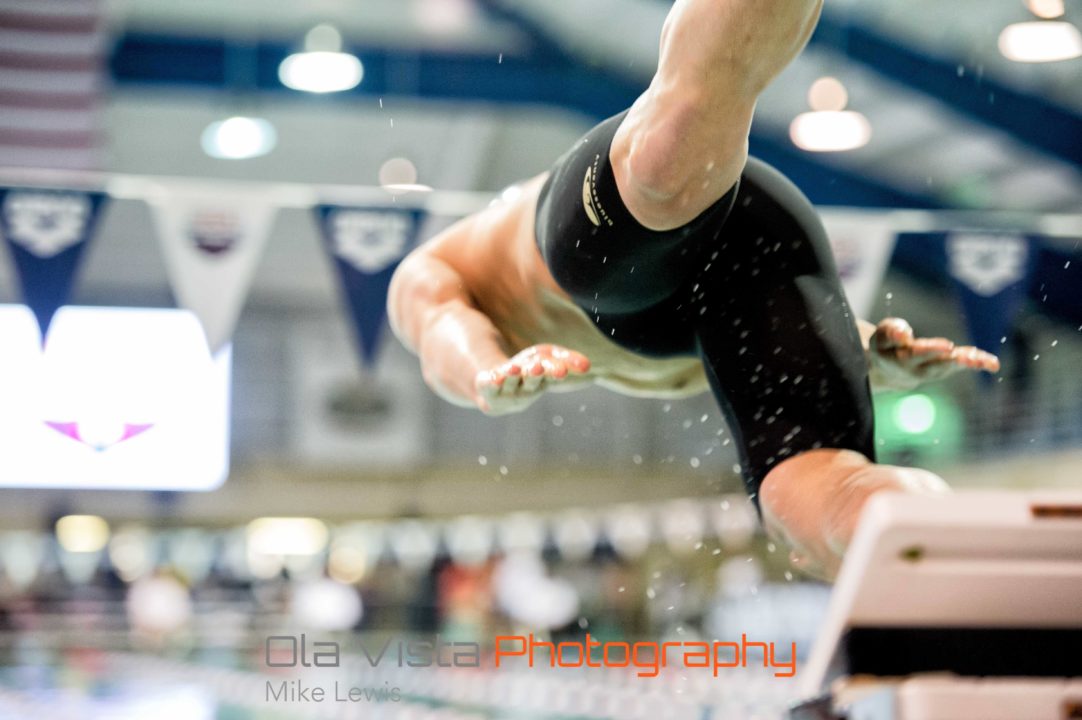Every taper is unique (and it should be). You are a different age, have trained slightly or dramatically differently than the year before, and may be competing in different events. Your coach knows how you respond to rest and will create the taper you need.
The idea behind taper is to reach the body’s peak performance level by diminishing training volume—enabling the body to recover from the physiological stress of months of heavy training. Literature suggests that the taper period should involve a reduction to 40-60% of one’s training volume to maximize performance gains1. The most effective taper model in one study achieved that reduction in training volume through a 37% decrease in low-intensity training, a 49% decrease in high-intensity training, and a 95% decrease in strength training1. This means taper will likely include some speed work (a must for rehearsing parts of your race), a fair amount of easy swimming, and little to no weightlifting.
You have spent the year building up strength, power and speed in the weight room, but in order to let that hard work help you perform, the strength training must decrease. Studies suggest that muscle strength and power may be suppressed during heavy training, but recover and peak during the taper period. An increase in stretching, foam rolling and simple bodyweight exercises should replace the strength training for a dryland that focuses on keeping your patterns of movement fluid, your range of motion at its maximum, and your muscles loosened.
While your muscles need recovery, remember to work each day of taper the way it is designed for you. On a moderate volume day, stay aerobic with your practice. Save the starts, turns, and 50’s pace for your high intensity day, but don’t over-do it. On recovery days, simply enjoy the easy swimming! When dealing with multiple peak performance competitions, maintaining a slightly elevated training volume before the first meet helps keep endurance up for the next, and light strength training may persist closer to the first meet.
With so much focus dedicated to recovery, swimmers can over-analyze how their bodies feel. It’s okay to feel stiff—remember that how you feel doesn’t necessarily correlate with how fast you swim. Execute your taper with focus and integrity, but enjoy it fully!
References:
1. J Sports Sci Med. 2013 Dec 1;12(4):668-78. eCollection 2013. Identifying Optimal Overload and Taper in Elite Swimmers over Time. Hellard P, Avalos M, Hausswirth C1, Pyne D2, Toussaint JF3, Mujika I4.
 BridgeAthletic works with elite professional, collegiate, and club swimming programs to provide a turnkey solution for dryland training. Led by Nick Folker, the top swimming strength and conditioning coach in the world, our team builds stroke-specific, custom-optimized dryland programs for each of our clients. The individualized workouts are delivered directly to athletes via our state of the art technology platform and mobile applications. Check Nick and BridgeAthletic out as recently featured in SwimSwam.
BridgeAthletic works with elite professional, collegiate, and club swimming programs to provide a turnkey solution for dryland training. Led by Nick Folker, the top swimming strength and conditioning coach in the world, our team builds stroke-specific, custom-optimized dryland programs for each of our clients. The individualized workouts are delivered directly to athletes via our state of the art technology platform and mobile applications. Check Nick and BridgeAthletic out as recently featured in SwimSwam.
 Nick Folker is the Co-Founder and Director of Elite Performance at BridgeAthletic. Nick’s athletes have won 22 Olympic Medals, 7 team NCAA Championships and over 170 individual and relay NCAA championships. Megan Fischer-Colbrie works as the Sports Science Editor at BridgeAthletic. Megan was a four-year varsity swimmer at Stanford, where she recently graduated with a degree in Human Biology.
Nick Folker is the Co-Founder and Director of Elite Performance at BridgeAthletic. Nick’s athletes have won 22 Olympic Medals, 7 team NCAA Championships and over 170 individual and relay NCAA championships. Megan Fischer-Colbrie works as the Sports Science Editor at BridgeAthletic. Megan was a four-year varsity swimmer at Stanford, where she recently graduated with a degree in Human Biology.
The Championship Series by BridgeAthletic is designed to empower athletes with tips from the pros that will help them reach peak performance come race day. We will be covering competition-focused topics such as nutrition, recovery, stretching, and mental preparation.



I think Bob Bowman said a taper is like a haircut – you never know if it’s any good until it’s done.
That’s an Eddie Reese quote actualdistance kidsly
As far as my two cents regarding taper- a coach needs to monitor their toasts every year and record exactly what they do abd the results. This makes it so in 3-5 years, he or she has a very good idea in what goes into a great taper. This can be expedited if the coach before them has done this abd tutors them in the art.
From my experience @love2swim, hs distance swimmers usually rest 7-10 days for boys, unless they have more muscle, then it I go 10-14. Hs distance Girls I give 5-7 days. I do this depending on the work load too
What about swimmers who simply do not swim well after tapering? I’ve seen this in many distance swimmers. Anyone know what tapers tend to work for distance swimmers at the HS level….not talking Olympians here, just solid say, State-qualifying club swimmers.
A taper is built on a good monitoring system that is built over the training life of an athlete (if possible). It should be based on the immediate season goals and the short term and long term training plan. If the athlete is monitored effectively the coach and the training team would know what, when and how to (taper) prepare the athlete for peak performance using both invasive and non-invasive tools. Unfortunately money has a positive impact on the effectiveness of the taper. A low budget program with a good thorough basic monitoring program can also be effective if the data is collect on the non-invasive variables. Norris and Smith is a good read on planning a competition program.
“A… Read more »
Taper – Ha!
These days, all you need to become a certified USA swim coach – is to watch some videos, take some tests, and have a background check. Where are coaches suppose to learn about tapers? Oh – that’s right – from coaches who have come before….and follow the same habits that have been created over the years.
There are 2 types of seasons – short and long – and usually only a couple of “big meets” during those seasons – and if a swimmer doesn’t get enough rest at the right time – they can miss the opportunity to swim really well.
Another aspect that isn’t taken into consideration is that not every swimmer is built the… Read more »
…for most of their athletes. Until a reliable method of measuring central nervous system fatigue is invented, tapers will always be mysterious, and difficult to understand. I suspect the younger and more gifted the athlete, the margin for error you have. However sometimes it’s just hard to tell. Some really gifted athletes need a lot more rest than one would think. I recall Ian Crocker’s experience as chronicled in “And Then They Won Gold.” He was stuck in the 52’s until he rested an extra few weeks, doing very little. Then he jumps to a :50 and a world record.
“Your coach knows how you respond to rest and will create the taper you need.”
I enjoy this discussion, but as a part-time coach i have to disagree with the above statement. Most coaches are making educated guesses during taper
One thing that was not mentioned above is that Nic was an international medal winning swimmer on the South African senior team and has personal experience in the cauldron of high level International competition – This Experience you cannot buy or acuire by accademic persuit and places him in a special position in the sports science realm!
Hi, I was wondering what the current research says on taper and strength training, specifically weight training. This article references a 95% decrease in strength training, but the study itself only defined strength training as dryland and general conditioning. Thanks!